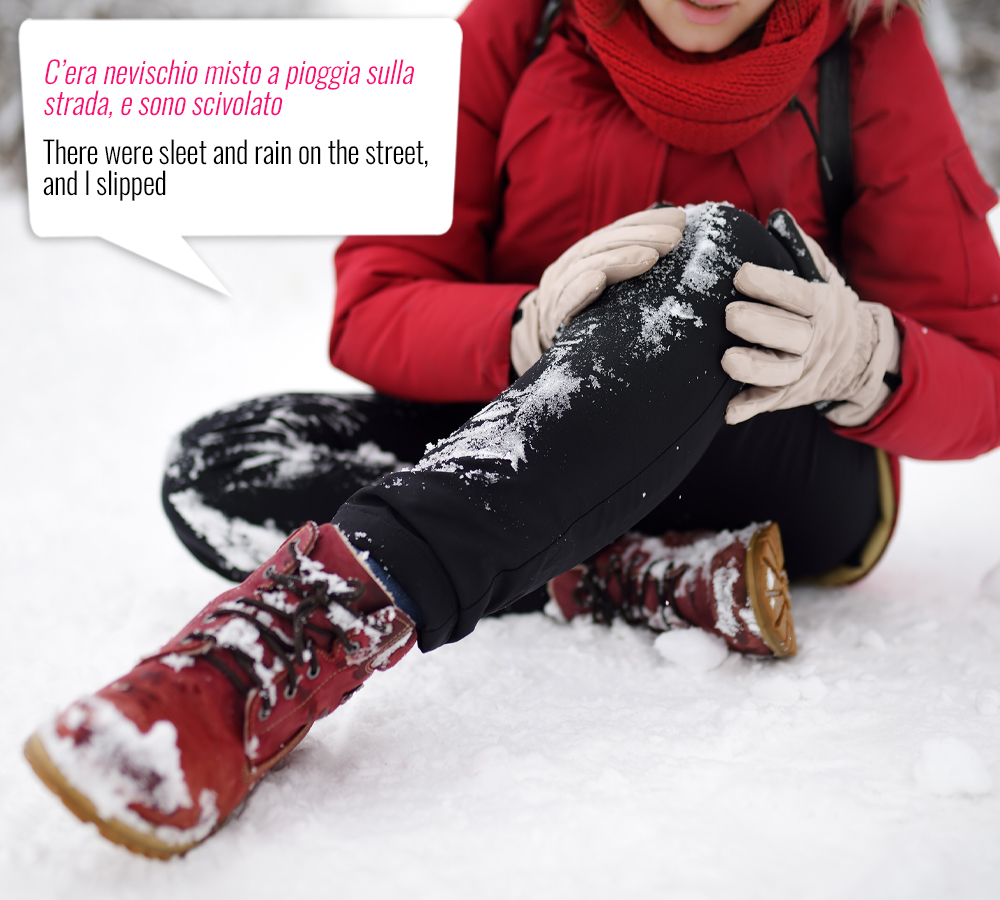Who doesn’t want a white Christmas? Today’s word is welcomed by all those who enjoy snow! Nevischio (nai-vee-skeeoh) comes from the Italian word for snow, “neve,” and it appeared for the first time in our vocabulary in the 15th century.

Nevischio are the soft, dry and tiny snowflakes, light and feathery, that often fall just before true, heavy snow arrives: they melt away as soon as they hit the ground, but they do announce the coming of neve most of the time. In English, we translate it with the word “sleet.”
Sometimes, nevischio falls along with rain, so don’t be surprised if you hear an Italian saying Ieri le strade erano bruttissime, con tutta quella pioggia e nevischio che scendevano! (“Yesterday, the roads were awful, because of all the rain and sleet coming down!”).

Perhaps the verb derived from the noun, nevischiare, is even more common. For instance, people often say in the winter, Guarda, nevischia. Mettiti gli scarponi se esci, potrebbe nevicare presto (“Look, it’s sleeting! Wear your winter boots if you go out, it may start snowing soon”), but also Quando nevischia, inizio ad immaginare la neve e le giornate davanti al caminetto! (“When it sleets, I start dreaming about snow and days spent in front of the fireplace!”).
Nevischio usually non attacca on the ground, which is another typical winter expression in our language. We say that sleet and snow “don’t stick” when they melt immediately and they fail to form that white soft coat winter lovers adore. Nevischio can be dangerous, too, especially when it falls with, as we said, rain: it makes the ground slippery and, if it gets cold, everything gets icy: so drive carefully!
Ho camminato per ore sotto il nevischio
I walked for hours under the sleet
Sta nevischiando: penso che stanotte nevicherà!
It’s sleeting, I think it’ll snow during the night!
C’era nevischio misto a pioggia sulla strada, e sono scivolato
There were sleet and rain on the street, and I slipped






























